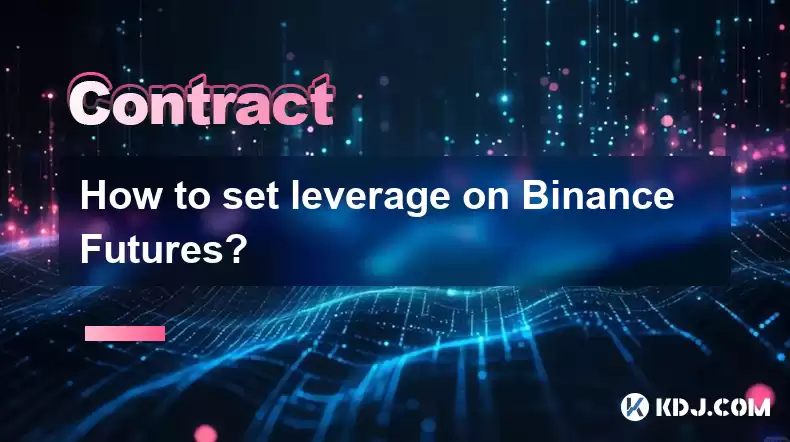-
 Bitcoin
Bitcoin $116700
0.24% -
 Ethereum
Ethereum $3973
4.34% -
 XRP
XRP $3.283
7.68% -
 Tether USDt
Tether USDt $1.000
0.01% -
 BNB
BNB $789.8
2.27% -
 Solana
Solana $176.2
3.31% -
 USDC
USDC $0.9999
0.00% -
 Dogecoin
Dogecoin $0.2238
5.14% -
 TRON
TRON $0.3389
-0.51% -
 Cardano
Cardano $0.7907
4.03% -
 Stellar
Stellar $0.4527
10.02% -
 Hyperliquid
Hyperliquid $41.07
4.27% -
 Sui
Sui $3.794
1.77% -
 Chainlink
Chainlink $19.49
10.40% -
 Bitcoin Cash
Bitcoin Cash $580.9
0.74% -
 Hedera
Hedera $0.2617
4.32% -
 Avalanche
Avalanche $23.41
3.67% -
 Ethena USDe
Ethena USDe $1.001
-0.03% -
 Litecoin
Litecoin $122.4
1.38% -
 Toncoin
Toncoin $3.364
1.49% -
 UNUS SED LEO
UNUS SED LEO $8.988
0.37% -
 Shiba Inu
Shiba Inu $0.00001295
2.82% -
 Uniswap
Uniswap $10.62
5.75% -
 Polkadot
Polkadot $3.922
4.46% -
 Dai
Dai $1.000
0.01% -
 Bitget Token
Bitget Token $4.494
2.15% -
 Monero
Monero $268.0
-1.30% -
 Cronos
Cronos $0.1523
3.68% -
 Pepe
Pepe $0.00001127
4.43% -
 Aave
Aave $285.4
4.85%
How to set leverage on Binance Futures?
Binance Futures offers leverage trading, letting users amplify potential profits (and losses) per trade, not account-wide. Understanding margin requirements and utilizing risk management tools like stop-loss orders are crucial before using leverage, which varies by cryptocurrency.
Mar 26, 2025 at 04:07 am

Key Points:
- Binance Futures offers leverage trading, allowing users to amplify their potential profits (and losses).
- Leverage is set on a per-trade basis, not a general account setting.
- Understanding margin requirements and risk management is crucial before using leverage.
- Different cryptocurrencies may have different maximum leverage limits on Binance Futures.
- Binance provides tools and settings to help manage your risk while using leverage.
How to Set Leverage on Binance Futures?
Binance Futures allows users to trade with leverage, magnifying potential gains but also significantly increasing the risk of substantial losses. Setting leverage isn't a global account setting; you choose it for each individual trade. Let's break down the process step-by-step.
First, you need a Binance account and to navigate to the Binance Futures platform. Ensure you're comfortable with the risks involved before proceeding. Leverage trading is not suitable for all investors.
Next, you need to select the cryptocurrency pair you want to trade. For example, you might choose BTC/USDT (Bitcoin paired with Tether). The available leverage will vary depending on the specific trading pair.
- Locate the Leverage Setting: Once you've chosen your trading pair, you'll see a section to specify your leverage. This is typically displayed near the order entry area.
- Choose Your Leverage Multiplier: You'll then select your desired leverage multiplier. This is usually represented as a number (e.g., 2x, 5x, 10x, 125x). A 10x leverage means you're trading with ten times your initial margin. Higher leverage means higher risk.
- Confirm Your Order: After selecting your leverage, review your trade details carefully, including the amount of margin required, your position size, and the potential profit/loss. Confirm your order only after a thorough review.
Understanding Margin Requirements: Your margin is the amount of cryptocurrency or stablecoin you've allocated for a particular trade. With leverage, you only need to deposit a fraction of the total trade value as margin. However, if the market moves against your position and your losses exceed your margin, you risk liquidation.
Binance provides various risk management tools to help prevent liquidation. These include:
- Stop-Loss Orders: These orders automatically close your position if the price moves against you by a specified amount. This helps limit potential losses.
- Take-Profit Orders: These orders automatically close your position when the price reaches your profit target, securing your gains.
- Liquidation Protection: Binance implements various levels of liquidation protection to minimize the risk of sudden liquidations, giving traders more time to react to market movements.
Remember that leverage amplifies both profits and losses. A small market movement can lead to significant gains or losses depending on your leverage. Therefore, risk management is paramount. Never use leverage beyond your risk tolerance and understanding.
The maximum leverage available varies depending on the trading pair and your verification level on Binance. Generally, higher verification levels allow access to higher leverage. Always check the maximum leverage allowed for each specific trading pair before placing a trade.
Binance provides educational resources to help users understand leverage trading. It's highly recommended to familiarize yourself with these resources before engaging in leveraged trading. Understanding the risks is crucial to successful trading.
Common Questions:
Q: What is the maximum leverage on Binance Futures?
A: The maximum leverage available varies depending on the specific trading pair and your account verification level. It can range from 1x to 125x, but this isn't a universal value and can change. Always check the specific trading pair's details on the Binance platform.
Q: What happens if my position is liquidated?
A: Liquidation occurs when your losses exceed your margin, forcing Binance to automatically close your position to prevent further losses. You will lose the funds used as margin.
Q: Is leverage trading risky?
A: Yes, leverage trading is inherently risky. It amplifies both profits and losses, potentially leading to significant financial losses if the market moves against your position. Only use leverage if you fully understand the risks involved and have a robust risk management strategy.
Q: Can I change my leverage during an open position?
A: No, you cannot change your leverage after you've opened a position. You must close your current position and open a new one with the desired leverage.
Q: How do I calculate my potential profit/loss with leverage?
A: Your potential profit/loss is calculated by multiplying your position size by the price change and your leverage. Binance provides profit/loss calculators on the platform, which you can use to estimate potential outcomes before opening a position. Always carefully check these calculations before entering a trade.
Disclaimer:info@kdj.com
The information provided is not trading advice. kdj.com does not assume any responsibility for any investments made based on the information provided in this article. Cryptocurrencies are highly volatile and it is highly recommended that you invest with caution after thorough research!
If you believe that the content used on this website infringes your copyright, please contact us immediately (info@kdj.com) and we will delete it promptly.
- Coinbase, Cosmos, and dYdX: Navigating the Crypto Currents
- 2025-08-09 06:30:16
- BNB Price, Altcoins, and Predictions: What's the Buzz?
- 2025-08-09 06:30:16
- Crypto Presale Projects Primed for Gains in 2025: A New Yorker's Take
- 2025-08-09 06:50:15
- Ruvi AI: The Millionaire Maker Poised for a Price Spike?
- 2025-08-09 06:50:15
- Cold Wallet, CoinMarketCap, Cardano & XRP: Navigating Crypto's Next Big Wave
- 2025-08-09 07:10:15
- Hedera (HBAR) Price Surge: Market Cap Soars, What's Next?
- 2025-08-09 07:10:15
Related knowledge

What is the difference between realized and unrealized PNL on KuCoin?
Aug 09,2025 at 01:49am
Understanding Realized and Unrealized PNL on KuCoinWhen trading on KuCoin, especially in futures and perpetual contracts, understanding the distinctio...

How does KuCoin Futures compare against Binance Futures in terms of features?
Aug 09,2025 at 03:22am
Trading Interface and User ExperienceThe trading interface is a critical component when comparing KuCoin Futures and Binance Futures, as it directly i...

What is the distinction between mark price and last price on KuCoin?
Aug 08,2025 at 01:58pm
Understanding the Basics of Price in Cryptocurrency TradingIn cryptocurrency exchanges like KuCoin, two key price indicators frequently appear on trad...

What are the specific maker and taker fees on KuCoin Futures?
Aug 08,2025 at 08:28am
Understanding Maker and Taker Fees on KuCoin FuturesWhen trading on KuCoin Futures, users encounter two primary types of fees: maker fees and taker fe...

Can you explain the difference between cross margin and isolated margin on KuCoin?
Aug 09,2025 at 02:57am
Understanding Margin Trading on KuCoinMargin trading on KuCoin allows traders to borrow funds to increase their trading position beyond their actual c...

How can I open a long position on KuCoin Futures?
Aug 09,2025 at 02:07am
Understanding KuCoin Futures and Long PositionsOpening a long position on KuCoin Futures means you are speculating that the price of a cryptocurrency ...

What is the difference between realized and unrealized PNL on KuCoin?
Aug 09,2025 at 01:49am
Understanding Realized and Unrealized PNL on KuCoinWhen trading on KuCoin, especially in futures and perpetual contracts, understanding the distinctio...

How does KuCoin Futures compare against Binance Futures in terms of features?
Aug 09,2025 at 03:22am
Trading Interface and User ExperienceThe trading interface is a critical component when comparing KuCoin Futures and Binance Futures, as it directly i...

What is the distinction between mark price and last price on KuCoin?
Aug 08,2025 at 01:58pm
Understanding the Basics of Price in Cryptocurrency TradingIn cryptocurrency exchanges like KuCoin, two key price indicators frequently appear on trad...

What are the specific maker and taker fees on KuCoin Futures?
Aug 08,2025 at 08:28am
Understanding Maker and Taker Fees on KuCoin FuturesWhen trading on KuCoin Futures, users encounter two primary types of fees: maker fees and taker fe...

Can you explain the difference between cross margin and isolated margin on KuCoin?
Aug 09,2025 at 02:57am
Understanding Margin Trading on KuCoinMargin trading on KuCoin allows traders to borrow funds to increase their trading position beyond their actual c...

How can I open a long position on KuCoin Futures?
Aug 09,2025 at 02:07am
Understanding KuCoin Futures and Long PositionsOpening a long position on KuCoin Futures means you are speculating that the price of a cryptocurrency ...
See all articles

























































































